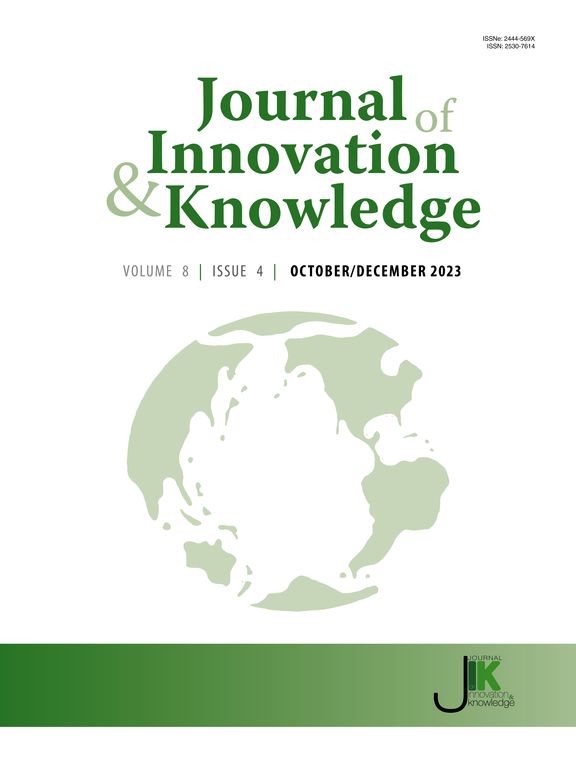Fits like a glove? Knowledge and use of size finders and high-end fashion retail returns
IF 15.5
1区 管理学
Q1 BUSINESS
引用次数: 0
Abstract
With returns imposing a growing burden on retail supply chains, major e-commerce platforms are increasingly implementing size recommendations to curb returns. Based on a fit valence and fit reference framework, we test whether customers using the size finder are more likely or less likely to return products. We use confidential data from a major fashion e-commerce platform in Sweden that introduced a size finder based on customer-supplied information on weight, build, hips, waist, shoulders, leg-to-torso length, and body shape. In a sample of 496,365 items ordered by 75,707 customers from 113 countries between July 2015 to April 2022, those using the size finder are 0.65% more likely to return an item. The findings are robust to a variety of econometrics tests. Furthermore, machine learning analysis based on gradient boosted trees shows that size finder is among the least important features in predicting returns. However, for each unit quarterly increase in the use of the size finder with purchased items, the customer lifetime value (CLV) increases by 7.51% in the next quarter and 5.53% in the subsequent quarter. Post-hoc interviews with executives in the e-commerce sector demonstrated that, when implementing size recommendation tools, managers in fashion retailers must weigh a small increase in returns against higher CLV from repeat customers.
像手套一样合适吗?了解和使用尺寸查找器和高端时尚零售退货
随着退货给零售供应链带来越来越大的负担,各大电子商务平台越来越多地实施尺码建议,以遏制退货。基于适合价和适合参考框架,我们测试了使用尺寸查找器的客户是否更有可能退货。我们使用了瑞典一家主要时尚电子商务平台的机密数据,该平台推出了一个尺寸查找器,该尺码查找器基于客户提供的体重、体型、臀部、腰围、肩膀、腿到躯干的长度和体型等信息。在2015年7月至2022年4月期间,来自113个国家的75,707名客户订购了496,365件商品的样本中,使用尺寸查找器的人退货的可能性高出0.65%。这些发现在各种计量经济学测试中都是稳健的。此外,基于梯度增强树的机器学习分析表明,尺寸查找器是预测收益中最不重要的特征之一。然而,每季度在购买物品中使用尺寸查找器的数量增加一个单位,客户终身价值(CLV)在下一个季度增加7.51%,下一个季度增加5.53%。对电子商务行业高管的事后采访表明,在实施尺码推荐工具时,时尚零售商的经理必须权衡回报的小幅增长与回头客的更高CLV。
本文章由计算机程序翻译,如有差异,请以英文原文为准。
求助全文
约1分钟内获得全文
求助全文
来源期刊

Journal of Innovation & Knowledge
Multiple-
CiteScore
16.10
自引率
12.70%
发文量
118
审稿时长
37 days
期刊介绍:
The Journal of Innovation and Knowledge (JIK) explores how innovation drives knowledge creation and vice versa, emphasizing that not all innovation leads to knowledge, but enduring innovation across diverse fields fosters theory and knowledge. JIK invites papers on innovations enhancing or generating knowledge, covering innovation processes, structures, outcomes, and behaviors at various levels. Articles in JIK examine knowledge-related changes promoting innovation for societal best practices.
JIK serves as a platform for high-quality studies undergoing double-blind peer review, ensuring global dissemination to scholars, practitioners, and policymakers who recognize innovation and knowledge as economic drivers. It publishes theoretical articles, empirical studies, case studies, reviews, and other content, addressing current trends and emerging topics in innovation and knowledge. The journal welcomes suggestions for special issues and encourages articles to showcase contextual differences and lessons for a broad audience.
In essence, JIK is an interdisciplinary journal dedicated to advancing theoretical and practical innovations and knowledge across multiple fields, including Economics, Business and Management, Engineering, Science, and Education.
 求助内容:
求助内容: 应助结果提醒方式:
应助结果提醒方式:


